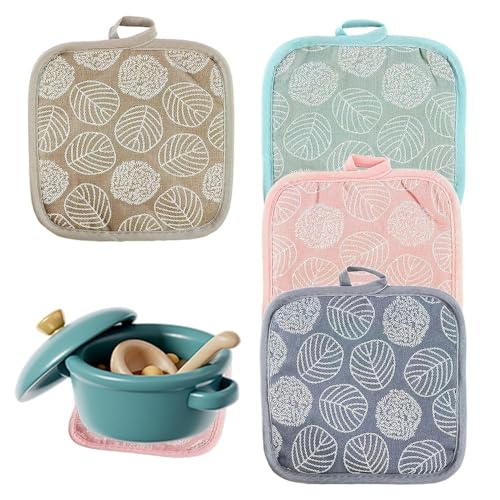Why it’s Important to Sanitize Pot Holders after Handling Raw Meat
When it comes to food safety, proper handling of raw meat is essential to prevent cross-contamination and the spread of harmful bacteria. One frequently overlooked aspect of this process is properly sanitizing pot holders that come into contact with raw meat. Pot holders can harbor bacteria and germs from raw meat, posing a risk to your health if not sanitized correctly. In this article, we will explore why it’s important to sanitize pot holders after handling raw meat and provide step-by-step instructions on how to do so effectively.
The Dangers of Cross-Contamination from Pot Holders
Cross-contamination is the transfer of harmful bacteria from one surface to another, typically through contact. When handling raw meat, pot holders can easily become contaminated with bacteria such as Salmonella, E. coli, and Campylobacter. If these pot holders are not properly sanitized, the bacteria can survive and multiply, leading to potential foodborne illnesses.
Every time you touch a pot holder that has come into contact with raw meat, you have the potential to spread harmful bacteria to other surfaces in your kitchen. This includes cutting boards, countertops, utensils, and even your hands. By properly sanitizing pot holders, you can minimize the risk of cross-contamination and keep your kitchen sanitary.
Step-By-Step Guide on How to Sanitize Pot Holders
1. Start by rinsing the pot holder under warm running water to remove any visible food particles. This will help to remove some of the bacteria from the surface.
2. Fill a sink or basin with hot water and add a few drops of dish soap. Swish the pot holder around in the soapy water to thoroughly clean it. Make sure to scrub any stains or soiled areas.
3. Rinse the pot holder again under warm running water to remove the soap residue.
4. Prepare a sanitizing solution by mixing one tablespoon of bleach with one gallon of water. Alternatively, you can use a commercial food-safe sanitizing solution.
5. Immerse the pot holder in the sanitizing solution for at least one minute. Ensure that the solution covers the entire surface of the pot holder, including any crevices or folds.
6. Remove the pot holder from the sanitizing solution and rinse it thoroughly under clean water.
7. Squeeze out any excess water and hang the pot holder to air dry in a clean and well-ventilated area.
Additional Tips for Sanitizing Pot Holders
– Always wash your hands thoroughly with soap and water before and after handling raw meat, and before sanitizing pot holders.
– Avoid using cloth pot holders that cannot be easily cleaned and sanitized. Opt for silicone or heat-resistant rubber pot holders that can be washed and sanitized more effectively.
– Regularly inspect your pot holders for signs of wear and tear. Replace them if they are worn, stained, or have holes, as they can harbor bacteria and become less effective at protecting your hands from heat.
– If you prefer, you can also sanitize pot holders by placing them in the dishwasher on the hottest setting. Make sure they are dishwasher safe before doing so.
Properly sanitizing pot holders after handling raw meat is an important step in preventing cross-contamination and foodborne illnesses. By following the above steps and incorporating good hygiene practices into your food preparation routine, you can ensure that your kitchen remains clean and safe for you and your family.






